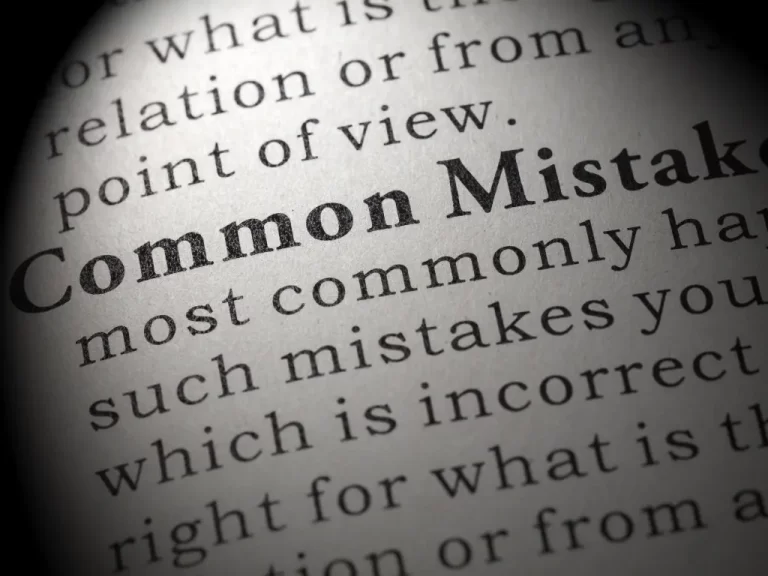The allure of automated trading in the Forex market is undeniably strong. Imagine a sophisticated software program, tirelessly analyzing market data, identifying opportunities, and executing trades with emotionless precision, all while you focus on other aspects of your life. This is the promise of the Forex EA, or Expert Advisor. For many, it represents the ultimate tool for generating passive income and achieving financial freedom.
However, the path to success with EAs is often littered with common pitfalls. While Expert Advisors offer immense potential, they are not magical money-making machines. They are powerful tools that, when misused or misunderstood, can quickly lead to significant losses. The “set and forget” dream, often peddled by unscrupulous marketers, is perhaps the most dangerous myth in the automated trading world.
This article is designed to be your essential guide, highlighting the top 5 mistakes to avoid when using Forex EAs. By understanding and proactively addressing these common errors, you can dramatically increase your chances of turning the potential of automated trading into tangible, sustained success. Let’s delve into these critical pitfalls and equip you with the knowledge to navigate them wisely.
Why Mistakes Happen with EAs: A Brief Overview

Mistakes with EAs often stem from a fundamental misunderstanding of what they are and how they interact with the complex, ever-changing Forex market. The core issue is usually an over-reliance on the automation aspect, leading users to believe that human oversight and strategic thinking are no longer necessary. This “set and forget” mentality, combined with the inherent difficulty of predicting future market movements, creates fertile ground for common and often costly errors. Many users underestimate the sophistication required to select, optimize, and manage an EA effectively.
Mistake 1: Blindly Trusting Backtest Results & Over-Optimization
One of the most appealing features of an EA is its ability to be backtested – run against historical market data to simulate its past performance. Developers often showcase stunning backtest results, featuring smooth equity curves and incredibly high profit factors, making the EA seem like an infallible money machine. However, blindly trusting backtest results without critical evaluation is one of the most significant Forex EA mistakes.
The Trap of Over-Optimization (Curve Fitting): This occurs when an EA’s parameters (e.g., entry/exit points, stop-loss levels, indicator settings) are relentlessly tweaked and adjusted to perfectly fit a specific segment of past historical data. While this makes the backtest look phenomenal, the EA has essentially “memorized” the past rather than learning a robust strategy. It’s like tailoring a suit perfectly for a single, unchanging mannequin; it won’t fit a real person moving in the real world.
Why it’s a mistake: Real markets are dynamic and unpredictable. An EA that is overly optimized for past conditions will almost certainly fail when exposed to live, ever-evolving market dynamics. It becomes highly sensitive to even minor deviations from the historical data it was “fitted” to. The beautiful backtest equity curve often turns into a steep nosedive in live trading.
How to Avoid this Common Forex Robot Mistake:
- Use Out-of-Sample Data: After optimizing on one period of historical data, test the EA on a completely different, unused segment of historical data. If it performs well on both, it’s a better sign of robustness.
- Forward Testing on a Demo Account: This is crucial. Before risking live trading EA funds, run the EA on a demo account for an extended period (weeks or even months) under real, current market conditions. This provides a far more accurate picture of its actual performance.
- Look for Logical, Robust Strategies: Don’t just chase high profit factors. Understand why the EA performed well. Does its strategy make fundamental sense? Can it logically adapt to different market types (trending, ranging, volatile)?
- Understand That Past Performance is Not Indicative of Future Results: This disclaimer is ubiquitous for a reason. Backtests are simulations of the past, not guarantees of the future. They are tools for understanding potential, not promises of profit.
Mistake 2: Neglecting Risk Management & Over-Leveraging
The excitement of automated trading can sometimes lead to a dangerous oversight: neglecting proper EA risk management. Many traders, seeing the potential for rapid profits, are tempted to use excessively high leverage or neglect to set appropriate stop-losses, believing the EA will simply make them rich.
The Temptation of Over-Leveraging: Leverage allows you to control a large position with a relatively small amount of capital. While it magnifies profits, it also magnifies losses. The “set and forget” myth, combined with the desire for rapid gains, often leads traders to set EA lot sizes far too high relative to their account balance.
Why it’s a mistake: Even the most profitable EA will experience drawdowns (periods of loss). When using high leverage, even a small drawdown can quickly deplete a significant portion of your capital, or worse, lead to a margin call and account liquidation. The emotional panic that ensues from seeing large losses often leads to rash decisions, such as prematurely shutting down a potentially good EA or increasing risk further in a desperate attempt to recover losses. EAs remove emotional trading, but they do not remove market risk.
How to Avoid this Forex Automation Pitfall:
- Always Use Stop-Losses (if the EA doesn’t have robust internal ones): Ensure every trade has a defined maximum loss. This protects your capital.
- Adhere to the 1-2% Rule Per Trade: This is a golden rule in trading. Never risk more than 1-2% of your total trading capital on any single trade. This means adjusting your lot size according to your stop-loss and account balance.
- Understand Your EA’s Maximum Drawdown: Backtest and forward test to identify the EA’s largest historical loss period. Ensure your account size and risk tolerance can comfortably withstand such a drawdown.
- Match Lot Sizes to Your Account Balance: Do not blindly use fixed lot sizes. Implement a proportional risk management strategy that adjusts lot size based on your current account equity.
- Never Trade with Money You Can’t Afford to Lose: This is fundamental to all trading. If losing the money would significantly impact your life, you are trading with too much emotional attachment, which can override even the most disciplined EA use.
Mistake 3: Failing to Adapt to Changing Market Conditions
An EA is a program designed to execute a specific strategy under defined conditions. The Forex market, however, is a constantly evolving beast. It shifts between trending phases, ranging (sideways) phases, periods of high volatility, and periods of low volatility. Major economic news, geopolitical events, and unexpected global developments can instantly alter market dynamics.
Why it’s a mistake: An EA optimized for a strongly trending market (e.g., consistently going up or down) will likely perform poorly, or even disastrously, in a ranging or choppy market, and vice-versa. Because an EA is rigid, it cannot “think” or adapt to these qualitative changes. Believing in the “set and forget” fallacy means allowing an EA to continue trading under unfavorable conditions, leading to consistent losses. This is a common cause of EA performance issues.
How to Avoid this EA Trading Loss Cause:
- Continuous Monitoring is Essential: While EAs automate execution, they still require human oversight. Regularly check your EA’s performance against current market conditions.
- Understand Your EA’s Strategy: Know precisely what type of market environment your EA is designed for. Is it a trend-follower? A counter-trend system? A scalper? This knowledge is critical for knowing when it will thrive and when it will struggle.
- Stay Informed: Keep an eye on major economic news releases (e.g., NFP, interest rate decisions) and significant geopolitical events. These events can create volatility that an EA might not be programmed to handle.
- Be Prepared to Pause or Adjust: Don’t be afraid to turn off an EA or change its settings (if you understand the implications) when market conditions become clearly unfavorable for its strategy. Sometimes, the best trade is no trade at all.
- Consider a Portfolio of EAs: Use EAs with different strategies that perform well in different market conditions. This diversifies your risk and allows you to potentially keep trading profitably even as market phases change.
Download EA's of interest
Mistake 4: Choosing the Wrong EA or Falling for Scams
The market for Expert Advisors is a double-edged sword. While it contains genuinely profitable EAs, it’s also unfortunately flooded with scams, poorly coded programs, and EAs with manipulated performance records. Many aspiring traders lose their initial capital not just from trading, but from purchasing ineffective or fraudulent software.
Why it’s a mistake: Investing in a subpar or scam EA is a guaranteed path to financial disappointment. You lose the money you spend on the EA itself, and then potentially much more through its poor trading performance. Identifying the red flags is crucial to avoid this significant Expert Advisor error.
Common Red Flags:
- Unrealistic Profit Claims: Promises of 100%, 500%, or 1000% monthly returns are almost always fraudulent.
- No Verifiable Track Record: If the developer cannot provide a transparent, third-party verified live trading account (e.g., Myfxbook.com) showing months or years of consistent performance, be highly suspicious. Screenshots are easily manipulated.
- Aggressive, Hype-Driven Marketing: Over-the-top sales pitches, “limited time offers,” and pressure tactics are common among scammers.
- Guarantees of No Loss: All trading involves risk. Any EA promising zero losses is a scam.
- Lack of Support or Community: Reputable developers provide documentation, support, and foster a community.
How to Avoid this Critical EA Mistake:
- Thorough Research is Paramount: This cannot be stressed enough. Dedicate significant time to researching any EA you consider.
- Prioritize Independently Verified Track Records: Myfxbook.com is the gold standard. Look for accounts with long histories (at least 6-12 months), low maximum drawdowns relative to profits, and realistic monthly gains.
- Read Discerning Reviews: Look for balanced reviews from multiple sources. Be wary of overly positive (potentially fake) or overly negative (potentially biased) reviews.
- Understand the Developer/Company: Is the developer transparent about their background? Do they have a good reputation in the trading community?
- Test on a Demo Account (Again!): Before purchasing, if a demo version is available, or if you can afford to purchase and then test, do so. This allows you to verify claims before risking significant capital.

Mistake 5: Neglecting Technical Requirements & Infrastructure
An EA, being a software program, requires a stable and optimized environment to function correctly. Many traders overlook the critical technical infrastructure needed, assuming their home computer and internet connection will suffice for Forex automation.
Why it’s a mistake: Any interruption in the EA’s operation can be costly. A power outage, internet disconnection, computer crash, or even high latency (delay) between your trading terminal and the broker’s server can prevent the EA from opening, managing, or closing trades at crucial moments. This can lead to missed opportunities, larger-than-expected losses, or trades running uncontrolled.
Common Issues:
- Home Internet Drops/Power Outages: Leads to EA downtime.
- Computer Crashes/Restarts: Interrupts continuous operation.
- High Latency: Slow communication with the broker, causing slippage.
- Broker Server Issues: Though less common, can still affect EA performance.
How to Avoid these EA Performance Issues:
- Use a Reliable Virtual Private Server (VPS): This is virtually essential for any serious EA user. A VPS provides a remote, continuously running Windows (or Linux) desktop environment that hosts your MetaTrader terminal and EA. It offers 24/7 uptime, stable internet connection, and usually very low latency to broker servers.
- Ensure Stable Internet Connection (for your VPS or home PC if not using VPS): A robust and consistent internet connection is crucial.
- Verify Broker Compatibility: Some EAs perform better with certain brokers due to differences in spreads, execution speeds, and slippage. Test your chosen EA extensively with your chosen broker.
- Regular Checks: Periodically log into your VPS (or check your home PC) to ensure your MetaTrader terminal is running, connected to the broker, and the EA is active. Don’t assume everything is fine.
Conclusion: EAs are Tools, Not Miracles
Forex Expert Advisors are powerful tools that, when used correctly, can significantly enhance a trader’s capabilities, offer emotional discipline, and contribute to consistent Forex profits. The dream of automated wealth is not entirely unfounded, but it’s important to understand the significant difference between generating consistent income and becoming “rich” overnight.
By consciously avoiding these top 5 mistakes to avoid when using Forex EAs – from the misinterpretation of backtests to neglecting crucial risk management and infrastructure – you position yourself for a far more successful and less frustrating automated trading journey. Approach EAs with intelligence, diligence, and realistic expectations, and they can indeed become a valuable asset in your quest for financial growth. Remember, EAs automate your strategy, but they don’t replace your responsibility as the ultimate decision-maker and risk manager.


